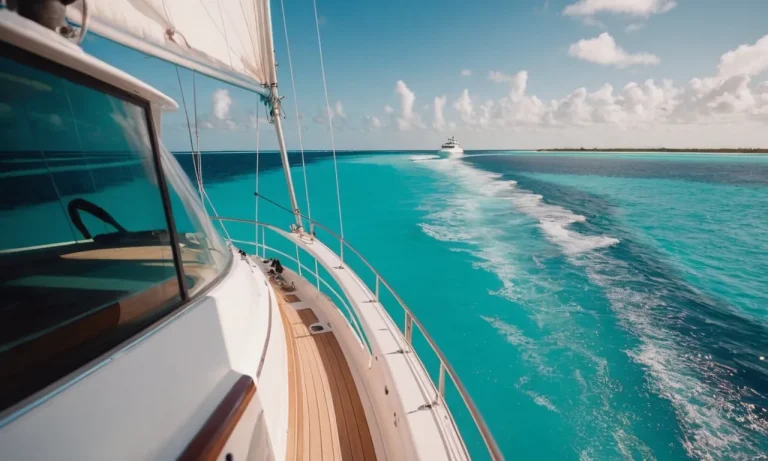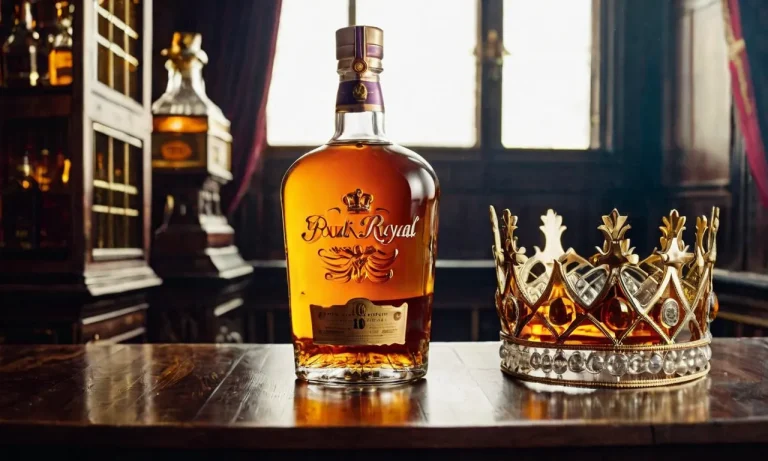Can Pilots Have Long Hair?
For those interested in a career as a pilot, grooming standards may be an important consideration when deciding whether this career path is right for you. In particular, pilots are often subject to restrictions regarding hair length and facial hair that are more stringent than some other professions.
If you’re short on time, here’s a quick answer: most airlines and aviation authorities place limitations on pilots’ hair length, generally requiring it to be trimmed to a short or moderate length. However, maximum hair length allowances tend to vary.
In this comprehensive guide, we’ll explore the specifics on pilots’ hair regulations, including maximum hair length policies for major airlines, reasons for hair standards, differences in rules for pilots vs cabin crew, whether female pilots can have long hair, and solutions for pilots who want to maintain longer hairstyles.
Maximum Hair Length Requirements by Airlines
When it comes to grooming standards, pilots are expected to maintain a professional appearance. This includes adhering to specific guidelines regarding their hair length. Different airlines may have varying requirements, so it’s essential for aspiring pilots to familiarize themselves with these regulations.
Commercial Airline Pilot Hair Length Limits
Most commercial airlines have set maximum hair length limits for their pilots, both male and female. These limits are in place to ensure that the hair does not interfere with the proper fitting and function of the pilot’s uniform and safety equipment.
For male pilots, the general rule is that hair should be neatly groomed and not extend below the collar. This means that long hair, such as ponytails or man buns, are typically not allowed. However, some airlines may allow a neatly trimmed beard or mustache, as long as it does not interfere with the proper fit of a respirator mask.
Female pilots, on the other hand, may have more flexibility when it comes to hair length. While specific limits vary by airline, many allow hair to be worn at shoulder length or longer. However, it is still expected to be well-groomed and not interfere with the proper fitting of the uniform or safety equipment.
Exceptions for Female Pilots
Some airlines have made exceptions for female pilots who prefer to have longer hair. In these cases, pilots may be required to securely tie their hair back in a bun or other approved hairstyle that keeps it away from their face and does not pose a safety risk.
This allows for more flexibility in hair length while still maintaining a professional appearance.
It’s important to note that while these are general guidelines, individual airlines may have their own specific policies. Aspiring pilots should always consult with the airline they wish to work for to ensure they are aware of any hair length requirements or exceptions.
For more information on grooming standards for pilots, you can visit the official websites of major airlines such as Delta Airlines or United Airlines.
Regulatory Basis for Airline Hair Policies
Aviation Authority Grooming Standards
When it comes to airline hair policies, they are primarily governed by the grooming standards set by aviation authorities. These standards vary from country to country and are designed to ensure a professional and uniform appearance among pilots and other aviation personnel.
For example, the Federal Aviation Administration (FAA) in the United States provides guidelines for acceptable hairstyles, including limitations on hair length and styling options.
It is important for pilots to adhere to these standards as they play a crucial role in maintaining the overall image and professionalism of the aviation industry. Airlines must enforce these regulations to comply with aviation authority requirements and maintain a standardized appearance among their pilots.
Safety Considerations for Pilots’ Hair
While grooming standards are primarily focused on appearance, there are also safety considerations related to pilots’ hair. Long hair, if not properly managed, can potentially pose a safety risk during flight operations.
Long hair has the potential to obstruct a pilot’s vision, especially in critical moments where split-second decision-making is required. Loose strands of hair can easily get caught in control mechanisms or obstruct views of instruments and gauges, compromising the safety of the flight.
Additionally, long hair can interfere with the proper fitting and effectiveness of safety equipment such as oxygen masks and headsets.
Considering these safety concerns, it is understandable why aviation authorities and airlines have implemented regulations regarding hair length and styling options for pilots. These regulations are in place to ensure that pilots can perform their duties safely and without any hindrances.
For more information on aviation grooming standards and safety considerations, you can visit the official websites of aviation authorities such as the Federal Aviation Administration (https://www.faa.gov) or the International Civil Aviation Organization (https://www.icao.int).
Differing Rules for Pilots vs. Flight Attendants
When it comes to grooming and appearance, there are often different rules and standards for pilots compared to flight attendants. While both professions require a professional and polished look, there are some variations in the guidelines they must follow.
Pilots’ Grooming Standards
Pilots are typically expected to maintain a more conservative and traditional appearance. This means that long hair for pilots is often discouraged or even prohibited. The rationale behind this rule is that long hair can potentially interfere with the proper fitting and sealing of oxygen masks and other safety equipment in case of an emergency.
Furthermore, long hair can be seen as less professional and may not convey the same level of authority and confidence that is expected from a pilot. Airlines prioritize a clean-cut and neat appearance for their pilots, as it reflects the professionalism and attention to detail required for their role.
It is important to note that each airline may have its own specific guidelines regarding hair length and style for pilots. Some airlines may allow a certain length of hair as long as it is neatly tied back or secured, while others may have more strict regulations requiring shorter haircuts.
For more information on specific airline grooming standards for pilots, it is recommended to visit the official websites of the respective airlines or consult their employee handbooks.
Flight Attendants’ Grooming Standards
On the other hand, flight attendants generally have more flexibility when it comes to their hairstyles. While a professional and well-groomed appearance is still expected, flight attendants are often allowed to have longer hair as long as it is styled neatly and does not interfere with their duties.
Flight attendants are often seen as the face of the airline and are expected to project a friendly and approachable image. Having longer hair can contribute to a softer and more welcoming look, as long as it is well-maintained and does not compromise safety or professionalism.
However, it is important to note that even though flight attendants may have more lenient rules regarding hair length, they are still required to adhere to specific grooming standards set by their respective airlines.
These standards may include guidelines on hair color, neatness, and overall appearance.
For a comprehensive understanding of grooming standards for flight attendants, it is best to refer to the official websites of the airlines or consult their employee manuals.
Accommodating Longer Hairstyles as a Pilot
When it comes to aviation, there are many regulations in place to ensure the safety and professionalism of pilots. One such regulation pertains to hairstyles, specifically the length of hair for pilots.
Traditionally, pilots have been required to maintain short hair for various reasons, including the fitting of oxygen masks and reducing the risk of hair getting caught in equipment. However, as times change and societal norms evolve, there is a growing conversation about accommodating longer hairstyles for pilots.
Short-Term Solutions
For pilots who prefer to keep longer hair, there are a few short-term solutions that can help meet the current regulations while still allowing for some flexibility in hairstyle choices. One option is to wear the hair in a neat and tidy bun or braid that is securely fastened.
This helps to keep the hair out of the face and reduces the risk of it becoming a distraction during flight.
Another short-term solution is the use of hairnets or hairpins to keep the hair in place. These can be worn under the pilot’s hat or helmet to ensure that the hair is contained and doesn’t interfere with any equipment or safety measures.
While these solutions may not be ideal for all pilots, they can provide a temporary compromise until long-term accommodations can be made.
Long-Term Accommodations
Recognizing the need for inclusivity and diversity in the aviation industry, some airlines and regulatory bodies are exploring long-term accommodations for pilots with longer hairstyles. This includes revisiting the existing regulations and considering alternative ways to ensure safety without compromising individuality.
One possible long-term accommodation is the development of specialized equipment, such as oxygen masks and helmets, that can be adjusted to accommodate different hairstyles. This would allow pilots with longer hair to maintain their desired style while still meeting safety requirements.
Additionally, ongoing research and discussions are being conducted to explore the potential impact of longer hair on emergency situations and to identify any potential risks or challenges that may arise.
It’s important to note that while the conversation about accommodating longer hairstyles for pilots is ongoing, safety remains the top priority. Any changes or accommodations that are implemented will be thoroughly tested and evaluated to ensure that they do not compromise the safety of pilots or passengers.
Conclusion
In summary, major commercial airlines place concrete restrictions on maximum hair length for pilots, generally allowing only short to moderate length hairstyles. These policies are rooted in aviation authority standards and safety considerations.
However, some accommodation may be possible, especially for female pilots. Candidates who wish to pursue the exciting career of a pilot while maintaining longer locks still have options with careful planning.








